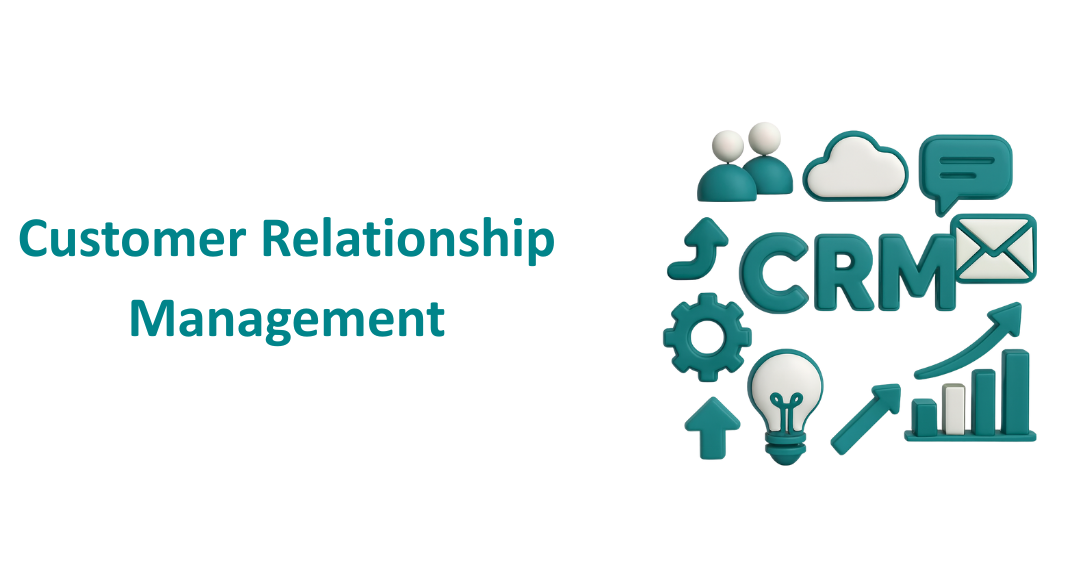
❅
❅
❅
❅
❅
❅
❅
❅
❅
❅
❅
❅
❅
❅
❅
❅
❅
❅
❅
❅
❅
❅
❅
❅
❅
❅
❅
❅
❅
❅
❅
❅
❅
❅
❅
❅
❅
❅
❅
❅
❅
❅
❅
❅
❅
❅
❅
❅
❅
❅
❅
❅
❅
❅
❅
❅
❅
❅
❅
❅
❅
❅
❅
❅
❅
❅
❅
❅
❅
❅
❅
❅
❅
❅
❅
❅
❅
❅
❅
❅
❅
❅
❅
❅
❅
❅
❅
❅
❅
❅
❅
❅
❅
❅
❅
❅
❅
❅
❅
❅
❅
❅
❅
❅
❅
❅
❅
❅
❅
❅
❅
❅
❅
❅
❅
❅
❅
❅
❅
❅
❅
❅
❅
❅
❅
❅
❅
❅
❅
❅
❅
❅
❅
❅
❅
❅
❅
❅
❅
❅
❅
❅
❅
❅
❅
❅
❅
❅
❅
❅
❅
❅
❅
❅
❅
❅
❅
❅
❅
❅
❅
❅
❅
❅
❅
❅
❅
❅
❅
❅
❅
❅
❅
❅
❅
❅
❅
❅
❅
❅
❅
❅
❅
❅
❅
❅
❅
❅
❅
❅
❅
❅
❅
❅
❅
❅
❅
❅
❅
❅
In the current digital economy, speed and efficiency are very important. Every day life is happening faster, and business has to do more with less. For example, manual processes are a barrier. Manual processes limit your capacity, waste time, and allow for mistakes that are not necessary. Automated processes can be a solution. Organizations are still successfully assigning roles, decreasing costs, creating value, and freeing you and your team to spend time thinking and working in strategic, creative, and innovative ways. Organizations can realize greater efficiency and put their manpower to better use by selecting the correct solutions to automate manual processes.
What is Business Process Automation?
Business process automation (BPA) is fundamentally the use of technology to perform repetitive tasks or processes in which manual effort can be reduced or replaced. BPA utilizes tools, software, and some robotic process automation to reduce risk, speed up processes, and increase efficiency. It is about enabling people to be more effective in their work and be empowered to devote more of their time to their strategic and creative thinking.
Why Automation Matters
- Efficiency undefined Speed - Automated workflows reduce redundant repetitiveness and allow for faster production with fewer errors.
- Scalable - Businesses can grow without having to proportionately grow their resources or employees.
- Cost - Removing the need for manual labor and the need to fix errors saves businesses a sizable amount of money.
- Consistency - Workflows have standardized processes, providing a more predictable result and an increase in customer satisfaction.
- Employee Engagement - Team members can focus on strategic matters instead of tedious tasks.
Benefits of Business Process Automation
When you bring automation into your organization, you're not just smoothing processes; you're changing your business model. Here is how:
- Enhanced Efficiency: My colleagues will not be hampered by tedious jobs and can work on things that create value.
- Reduced Mistakes: Using automation removes human errors in entering data, updating books, or writing reports, and, therefore, you can count on what gets produced.
- Better Compliance: Automated processes create an auditable trail and, therefore, make it easier to navigate through the proper regulatory process.
- Faster Decisions: No longer will a coworker need to spend time gathering data from your transactions; therefore, your team can confidently act quickly with real data and reporting now.
- Improved Customer Experience: Swift to respond, communicate in a personalized way, and transact all come more easily to your organization.
- Better Energy Use: Employees will be using their energy on high-impact creative work instead of repeating workflow processes.
Common Use Cases of Automation
Automation finds applications across industries and departments, such as:
- Using sales automation to engage customers at the appropriate time.
- Using accounting automation to simplify financial operations, including payroll, expense accounts, and reporting.
- Using automation to enhance IT processes for monitored and automatic security updates.
- Using automation to enhance customer service, including chatbots and AI, helps my customers serve themselves.
- Using HR automation to manage recruitment, employee onboarding automation, payroll automation, employee engagement, and HR workflow software more effectively.
- Using automation to effectively manage purchasing and supply chains helps to reduce delays and errors. These general use case examples show how automation can add value to any business function, and not be limited to or solved in a specific sector.
These general use cases highlight that automation is not limited to one sector but can benefit every business function.
How to Implement Automation
- Identify Problems: Spot unproductive and complicated workflows associated with errors.
- Select Tools: Select automation tools that integrate seamlessly with existing systems.
- Move Slowly: Implement one or two automations at first, and add more slowly.
- Empower Employees: Be sure that staff members understand the tools are worth using and that they can use automation.
- Pilot undefined Optimize: Examine the impact of your automation on an ongoing basis and iterate the workflow for optimization and additional impact.
No matter if you're a small, high-growth startup or part of a large corporation, the right business process automation would shift your ability to operate dramatically. Giving business process automation for small business owners in championing scale without the necessary huge resources helps them grow, and helps they do so. Businesses that do not rely on direct workers (labor) become business processes automated in being able to standardize work across large corporate organizational structures (i.e, at-scale efficiency).
1. Sales Automation
Focuses on streamlining the sales process, improving lead management, and enhancing customer interactions. Sales workflow automation helps ensure leads are tracked, followed up on, and nurtured automatically.
- Customer Relationship Management (CRM)
- Automatically capture and segment leads.
- Schedule follow-ups and reminders.
- Personalize communication at scale.
- Track customer journeys for better insights.
Example: HubSpot or Salesforce can assign leads and send nurturing emails automatically.
Why it matters: Speeds up sales cycles, improves customer satisfaction, and boosts conversion rates.
- Email Marketing
- Triggered campaigns.
- Segmentation of the audience.
- Automated follow-up emails.
- Real-time campaign analytics.
Example: Mailchimp or ActiveCampaign automates welcome emails and abandoned cart follow-ups.
Why it matters: Ensures continuous engagement with leads without manual effort.
2. Finance undefined Accounting Automation
Enhances accuracy, compliance, and efficiency in financial operations.
- Invoicing undefined Accounting
- Invoice generation.
- Payment reminders.
- Bank reconciliation.
- Expense tracking.
Example: QuickBooks or Xero automates invoicing, expense tracking, and supports invoice automation to simplify financial workflows.
Why it matters: Reduces late payments, errors, and improves cash flow predictability.
3. Human Resources (HR) Automation
Streamlines HR workflows, improves employee experience, and reduces administrative burden. HR automation plays a key role in minimizing repetitive work like digital onboarding solutions, payroll automation, and performance tracking, allowing HR teams to focus on people-driven strategies.
- Employee Onboarding undefined HR
- Digital onboarding workflows.
- Automated document collection and signing.
- Payroll automation for accurate salary processing and compliance.
- Employee leave and attendance management.
Example: BambooHR or Workday simplifies hiring and onboarding.
Why it matters: Improves first impressions, minimizes bottlenecks, and enhances employee satisfaction.
4. Marketing undefined Customer Engagement Automation
Optimizes brand presence, customer interaction, and social media management. Marketing workflow automation helps streamline campaigns, scheduling, monitoring, and analytics for better engagement.
- Social Media Management
- Schedule posts in advance.
- Monitor brand mentions.
- Curate relevant content.
- Generate performance reports.
Example: Buffer or Hootsuite schedules posts and tracks engagement.
Why it matters: Maintains brand visibility even when teams are offline.
- Customer Support
undefineda class="code-link" href="https://www.seaflux.tech/blogs/dialogflow-ai-solutions-transforming-businesses" target="_blank"undefinedChatbotundefined/aundefinedto answer FAQs.- Automatic ticket routing.
- Follow-ups after unresolved inquiries.
- AI-based self-service knowledge bases.
Example: Zendesk or Intercom accelerates support response times.
Why it matters: Provides 24/7 undefineda class="code-link" href="https://www.seaflux.tech/blogs/artificial-intelligence-customer-service-use-cases" target="_blank"undefinedcustomer supportundefined/aundefined, improves satisfaction, and reduces agent burnout.
5. Data undefined Reporting Automation
Reduces manual data entry, ensures accuracy, and provides actionable insights.
- Data Entry undefined Reporting
- Gather data from emails, invoices, or PDFs.
- Automatically update CRM/ERP records.
- Create dashboards and reports.
Example: Zapier or Microsoft Power Automate syncs data across platforms.
Why it matters: Ensures timely, accurate insights for better decision-making.
6. Project undefined IT Operations Automation
Enhances team productivity, project visibility, and system reliability.
- Project Management
- Task assignments based on rules.
- Automated reminders and notifications.
- Real-time progress tracking.
- Centralized collaboration.
Example: Asana, Trello, or Monday.com automate project workflows.
Why it matters: Reduces bottlenecks, promotes accountability, and improves transparency.
- IT undefined Security Processes
- Regular software updates and patches.
- Backup scheduling.
- Access control and user provisioning.
- Monitoring suspicious activities.
Example: Ansible or Puppet standardize IT practices and enhance security.
Why it matters: Secures systems and reduces manual IT workload.
7. Supply Chain undefined Inventory Automation
Streamlines procurement, inventory, and vendor management processes.
- Procurement undefined Inventory Management
- Automatic purchase order generation.
- Vendor management workflows.
- Accurate real-time stock updates.
- Standard purchase approvals.
Example: SAP Ariba or TradeGecko facilitates procurement and inventory control.
Why it matters: Minimizes stock-outs/over-stocks, simplifies workflows, and frees personnel for higher-value tasks.
Final Thoughts
To wrap things up, automation is really about taking time back from people (not stealing time). Because at the end of the day, you get to take time saved on boring, repetitive tasks and spend that time on much better things - human creativity, problem-solving, and connecting with customers.
You don't have to do what everyone else does for automation, and automate everything all at once. Take it slow and curious, and build from there, and with what it counts for your business. While this may not feel like much, they all collectively lead to smoother workflows, happier teams, and growing the business without bottlenecks.
Think about what is business process automation is as your partner - completely invisible - in the background, keeping everything in line for you and your team to advance the business. Recognizing the benefits of process automation ensures you approach it as a growth strategy, not just a technology shift.
Future-Proof Your Business with Automation Solutions
Seaflux is a undefineda class="code-link" href="https://www.seaflux.tech/custom-software-development" target="_blank"undefinedcustom software development companyundefined/aundefined that delivers automated business solutions to help organizations simplify workflows, cut costs, and boost productivity.
From business process automation solutions in CRM, finance automation, HR, and customer service to large-scale undefineda class="code-link" href="https://www.seaflux.tech/blogs/scaling-ai-enterprise-challenges-solutions" target="_blank"undefinedenterprise automation solutionsundefined/aundefined, we design strategies tailored to your goals. As an experienced automation services company, we provide end-to-end support from identifying automation opportunities to integrating intelligent workflows into your systems.
undefineda class="code-link" href="https://calendly.com/seaflux/meeting?month=2025-07" target="_blank"undefinedPartner with Seafluxundefined/aundefined to remove repetitive bottlenecks and focus on what matters most: innovation, strategy, and growth.

Hardik Dangodara
Business Development Manager










